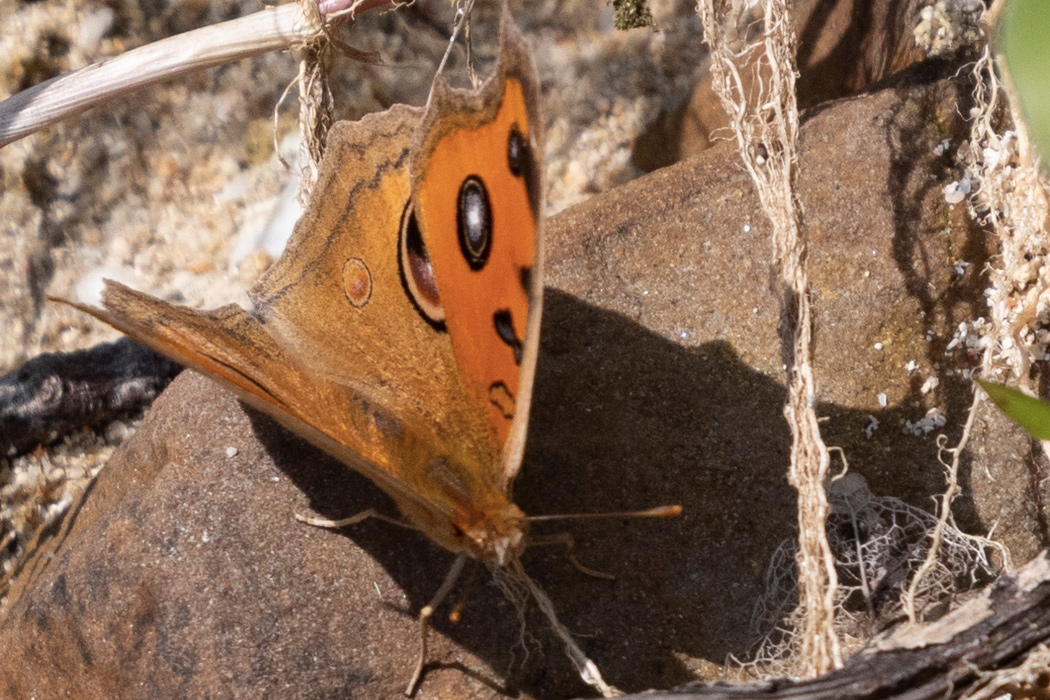
Peacock Pansy
has eyes like a peacock.
| Scientific name | Junonia almana |
| English name | Peacock Pansy |
| Japanese name | --- |
| Classification | Insecta |
| Classification details | Lepidoptera Nymphalidae |
| Full length | 54-62mm |
| Distribution | South Asia to East Asia. Distributed in Japan from the Nansei Islands to Kyushu. |
Characteristics
Nymphalidae with reddish-orange wing surfaces. The edges of the wings are light brown and have a unique curved shape. Both the forewings and hindwings have two large and small eyeball patterns with black borders. The color of the iris of the eye differs between the forewing and the hindwing. The forewing iris is purplish and the hindwing iris is reddish. The brown underside of the wings changes with the seasons.
Summer type and autumn type of vertical palm
The color of the underside of the wings differs between the summer type and the autumn type. The summer type has an eyeball pattern on the back. In the autumn type, both males and females are dark brown like dead leaves.

Ecology
This butterfly is distributed in the tropics and can be seen as a vagrant in the north of Honshu. The larvae eat plants of the Verbenaceae and Scrophulariaceae families. Fly quickly at a low height close to the ground. It is a butterfly of the Nymphalidae family, but it perches with its wings spread.
Habitat
I took a picture of watering on the ground where fresh water flows into the sandy beach. It was perched alone in a place a little away from the ground where many bluebottles were watering. The purple eyeball pattern on the forewings was vivid.
Pictures
Introducing a picture of Peacock Pansy.








